Volcano in Iceland, Ash Cloud over Europe
An enormous ash cloud from a remote Icelandic volcano caused the biggest flight disruption since the 2001 terrorist attacks as it drifted over northern Europe and stranded travelers on six continents. Officials said it could take days for the skies to become safe again in one of aviation's most congested areas.
-
 As the ash cloud from Iceland's volcanic eruption continues to hover over the European skies, flights to and from Europe remained suspended.
As the ash cloud from Iceland's volcanic eruption continues to hover over the European skies, flights to and from Europe remained suspended.
The closing of European airspace has dealt a severe blow to the beleaguered airline industry. The crisis has cost the airlines at least $1 billion so far in lost revenue and could wipe out weaker carriers if it continues much longer, analysts say.
Scientists say that because the volcano is situated below a glacial ice cap, magma is being cooled quickly, causing explosions and plumes of grit that can be catastrophic to plane engines, depending on prevailing winds. -
 A car is seen driving near Kirkjubæjarklaustur, Iceland, through the ash from the volcano eruption under the Eyjafjallajokull glacier in Iceland.
A car is seen driving near Kirkjubæjarklaustur, Iceland, through the ash from the volcano eruption under the Eyjafjallajokull glacier in Iceland.
The volcano erupted for the second time in less than a month, melting ice, shooting smoke and steam into the air. (AP Photo) -
 The Icelandic volcano that has kept much of Europe land-bound is far from finished spitting out its grit, and offered up new mini-eruptions that raise concerns about longer-term damage to world air travel and trade. (AP Photo)
The Icelandic volcano that has kept much of Europe land-bound is far from finished spitting out its grit, and offered up new mini-eruptions that raise concerns about longer-term damage to world air travel and trade. (AP Photo) -
 An aerial view of the glacier where the flood water, lower right, was flowing into the Markarfljot river from the glacier, volcanic eruption and the cracks in the Eyjafjallajokull glacier. The volcano in southern Iceland's Eyjafjallajokull glacier continued to send ash into the air. The Icelandic volcano that has kept much of Europe land-bound is far from finished spitting out its grit, and offered up new mini-eruptions that raise concerns about longer-term damage to world air travel and trade. (AP Photo)
An aerial view of the glacier where the flood water, lower right, was flowing into the Markarfljot river from the glacier, volcanic eruption and the cracks in the Eyjafjallajokull glacier. The volcano in southern Iceland's Eyjafjallajokull glacier continued to send ash into the air. The Icelandic volcano that has kept much of Europe land-bound is far from finished spitting out its grit, and offered up new mini-eruptions that raise concerns about longer-term damage to world air travel and trade. (AP Photo) -
 Volcanic ash seen over Iceland´s main ring road near Skogar, east of the eruption as the volcano in southern Iceland's Eyjafjallajokull glacier sends ash into the air. (AP Photo)
Volcanic ash seen over Iceland´s main ring road near Skogar, east of the eruption as the volcano in southern Iceland's Eyjafjallajokull glacier sends ash into the air. (AP Photo) -
 This aerial image shows the crater at the summit of the volcano in southern Iceland's Eyjafjallajokull glacier. A lingering volcanic ash plume forced extended no-fly restrictions over much of Europe, as Icelandic scientists warned that volcanic activity had increased and showed no sign of abating - a portent of more travel chaos to come. Although the ash plume has grown, a northerly wind was expected to allow enough visibility for scientists to fly over the volcano. (AP Photo)
This aerial image shows the crater at the summit of the volcano in southern Iceland's Eyjafjallajokull glacier. A lingering volcanic ash plume forced extended no-fly restrictions over much of Europe, as Icelandic scientists warned that volcanic activity had increased and showed no sign of abating - a portent of more travel chaos to come. Although the ash plume has grown, a northerly wind was expected to allow enough visibility for scientists to fly over the volcano. (AP Photo) -
 Hay rolls covered by volcanic ash are seen on a farm located east of the eruption in Reykjavík, Iceland. Farmers across the region where the volcano erupted last week under the Eyjafjallajokull glacier have been scrambling to protect their herds from inhaling or ingesting the ash, which can cause internal bleeding, long-term bone damage and teeth loss.(AP photo)
Hay rolls covered by volcanic ash are seen on a farm located east of the eruption in Reykjavík, Iceland. Farmers across the region where the volcano erupted last week under the Eyjafjallajokull glacier have been scrambling to protect their herds from inhaling or ingesting the ash, which can cause internal bleeding, long-term bone damage and teeth loss.(AP photo) -
 Ice chunks carried downstream by floodwaters caused by volcanic activity lie on the Markarfljot river bank, some 120km east of the capital Rejkavik, Iceland. The Eyjafjallajokull glacier volcano began erupting for the second time in a month, sending ash several miles (kilometers) into the air. Winds pushed the plume south and east across Britain, Ireland, Scandinavia and into the heart of Europe causing travel chaos. (AP Photo)
Ice chunks carried downstream by floodwaters caused by volcanic activity lie on the Markarfljot river bank, some 120km east of the capital Rejkavik, Iceland. The Eyjafjallajokull glacier volcano began erupting for the second time in a month, sending ash several miles (kilometers) into the air. Winds pushed the plume south and east across Britain, Ireland, Scandinavia and into the heart of Europe causing travel chaos. (AP Photo) -
 Thick drifts of volcanic ash blanketed parts of rural Iceland on Friday as a vast, invisible plume of grit drifted over Europe, emptying the skies of planes and sending hundreds of thousands in search of hotel rooms, train tickets or rental cars. (AP Photo)
Thick drifts of volcanic ash blanketed parts of rural Iceland on Friday as a vast, invisible plume of grit drifted over Europe, emptying the skies of planes and sending hundreds of thousands in search of hotel rooms, train tickets or rental cars. (AP Photo) -
 A man displays volcanic ash fallen to ground at Myrdalssandur, some 220km east of the capital Rejkavik, Iceland. (AP Photo)
A man displays volcanic ash fallen to ground at Myrdalssandur, some 220km east of the capital Rejkavik, Iceland. (AP Photo) -
 Footprints in volcanic ash fallen to ground near Myrdalssandur, some 220km east of the capital Rejkavik, Iceland. (AP Photo)
Footprints in volcanic ash fallen to ground near Myrdalssandur, some 220km east of the capital Rejkavik, Iceland. (AP Photo) -
 Cattle herded to be given shelter from the volcanic ash clouds at a farm in Nupur, Iceland. (AP Photo)
Cattle herded to be given shelter from the volcanic ash clouds at a farm in Nupur, Iceland. (AP Photo) -
 A computer enhanced image provided by the German Aerospace Center, DLR, on Friday, April 16, 2010 shows a photo of the volcano under the Eyjafjallajokull glacier on Iceland taken by the TerraSAR-X satellite on Thursday evening, April 15, 2010. (AP Photo)
A computer enhanced image provided by the German Aerospace Center, DLR, on Friday, April 16, 2010 shows a photo of the volcano under the Eyjafjallajokull glacier on Iceland taken by the TerraSAR-X satellite on Thursday evening, April 15, 2010. (AP Photo) -
 This false color infrared image acquired from the Hyperion instrument onboard NASA's Earth Observing-1 (EO-1) spacecraft and provided by NASA shows Iceland's Eyjafjallajökull volcano. The image reveals the intense thermal emissions (at least 60 megawatts, or 60 million watts) emanating from the vent at the base of the massive plume, center. This thermal emission, equivalent to the energy consumption of 60,000 homes, represents only a small proportion of the total energy being released by the volcano as its molten lava interacts violently with ice and water. (AP Photo)
This false color infrared image acquired from the Hyperion instrument onboard NASA's Earth Observing-1 (EO-1) spacecraft and provided by NASA shows Iceland's Eyjafjallajökull volcano. The image reveals the intense thermal emissions (at least 60 megawatts, or 60 million watts) emanating from the vent at the base of the massive plume, center. This thermal emission, equivalent to the energy consumption of 60,000 homes, represents only a small proportion of the total energy being released by the volcano as its molten lava interacts violently with ice and water. (AP Photo) -
 Passengers are seen at Domodedovo airport outside Moscow. A lingering volcanic ash plume forced extended no-fly restrictions over much of Europe, as Icelandic scientists warned that volcanic activity had increased and showed no sign of abating a portent of more travel chaos to come. (AP Photo)
Passengers are seen at Domodedovo airport outside Moscow. A lingering volcanic ash plume forced extended no-fly restrictions over much of Europe, as Icelandic scientists warned that volcanic activity had increased and showed no sign of abating a portent of more travel chaos to come. (AP Photo) -
 Cars wait at a departure point at the car ferry terminal in Calais, France. Many European countries suspended their air traffic due to ash clouds from the volcanic eruption in Iceland. Train operator Eurostar said it was carrying almost 50,000 passengers between London, Paris and Brussels. Thalys, a high-speed venture of the French, Belgian and German rail companies, was allowing passengers to buy tickets even if trains were fully booked. Ferry operators in Britain received a flurry of bookings from people desperate to cross the English Channel to France.(AP Photo)
Cars wait at a departure point at the car ferry terminal in Calais, France. Many European countries suspended their air traffic due to ash clouds from the volcanic eruption in Iceland. Train operator Eurostar said it was carrying almost 50,000 passengers between London, Paris and Brussels. Thalys, a high-speed venture of the French, Belgian and German rail companies, was allowing passengers to buy tickets even if trains were fully booked. Ferry operators in Britain received a flurry of bookings from people desperate to cross the English Channel to France.(AP Photo) -
 An information indicator board shows canceled flights at the Helsinki Airport on Friday April 16, 2010. The airport was closed early Friday due to a cloud of volcanic ash in the upper atmosphere above much of Europe, emanating from a volcanic eruption Eyjafjallajokull glacier in Iceland. The volcanic ash is a hazard to jet aircraft engines, causing the cancellation of many flights over European airspace. (AP Photo)
An information indicator board shows canceled flights at the Helsinki Airport on Friday April 16, 2010. The airport was closed early Friday due to a cloud of volcanic ash in the upper atmosphere above much of Europe, emanating from a volcanic eruption Eyjafjallajokull glacier in Iceland. The volcanic ash is a hazard to jet aircraft engines, causing the cancellation of many flights over European airspace. (AP Photo) -
 Passengers line up to buy train tickets at Rome's Termini station, on Sunday, April 18, 2010. Travelers crowded train stations as flights remained grounded in large parts of the continent, including northern Italy, as authorities across Europe said there was no end in sight to the plume spewing out of a volcano in Iceland. Millions of passengers have had plans foiled or delayed because of a ban on air travel that has gradually expanded over large swaths of Europe since Thursday. (AP Photo)
Passengers line up to buy train tickets at Rome's Termini station, on Sunday, April 18, 2010. Travelers crowded train stations as flights remained grounded in large parts of the continent, including northern Italy, as authorities across Europe said there was no end in sight to the plume spewing out of a volcano in Iceland. Millions of passengers have had plans foiled or delayed because of a ban on air travel that has gradually expanded over large swaths of Europe since Thursday. (AP Photo) -
 Travelers have snacks by their luggage at the Henri Coanda airport in Bucharest, Romania, shortly before the country closed all of its airspace on Saturday, April 17, 2010. (AP Photo)
Travelers have snacks by their luggage at the Henri Coanda airport in Bucharest, Romania, shortly before the country closed all of its airspace on Saturday, April 17, 2010. (AP Photo) -
 Passengers wait for their flights at Borispol airport, near Kiev, as hundreds of commercial flights across northern and eastern Europe are canceled because of a drifting plume of volcanic ash originating from a volcanic eruption in Iceland. (AP Photo)
Passengers wait for their flights at Borispol airport, near Kiev, as hundreds of commercial flights across northern and eastern Europe are canceled because of a drifting plume of volcanic ash originating from a volcanic eruption in Iceland. (AP Photo) -
 Passengers rest at the Prat Llobregat airport, Spain. All flights in and out of Barcelona's Prat Llobregat airport and 16 other Spanish airports have been grounded due to the volcanic eruption. (AP Photo)
Passengers rest at the Prat Llobregat airport, Spain. All flights in and out of Barcelona's Prat Llobregat airport and 16 other Spanish airports have been grounded due to the volcanic eruption. (AP Photo) -
 Airplanes parked at the airport in Munich, southern Germany. Due to the volcanic ash cloud from the eruption under the Eyjafjallajokull glacier in Iceland, all flight from and to all Germany airports have been suspended. (AP Photo)
Airplanes parked at the airport in Munich, southern Germany. Due to the volcanic ash cloud from the eruption under the Eyjafjallajokull glacier in Iceland, all flight from and to all Germany airports have been suspended. (AP Photo) -
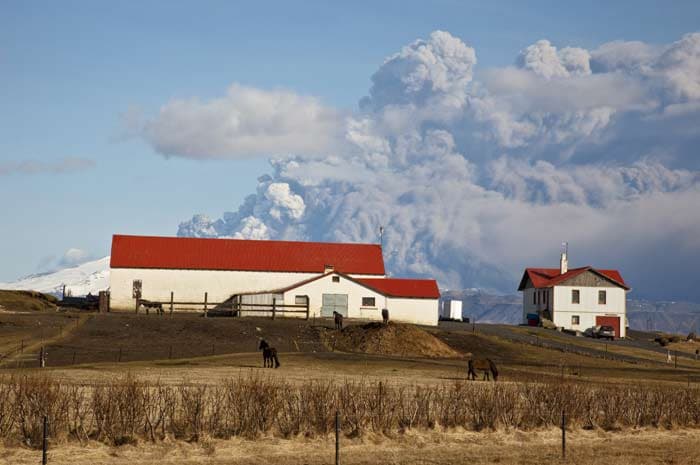 As Europe grounded most airline flights for a fourth day on Sunday because of a volcanic ash cloud spreading from Iceland, increasingly desperate airlines ran test flights to show that flying was safe and pressed aviation authorities to loosen the flight ban.
As Europe grounded most airline flights for a fourth day on Sunday because of a volcanic ash cloud spreading from Iceland, increasingly desperate airlines ran test flights to show that flying was safe and pressed aviation authorities to loosen the flight ban.
Airlines complained that European governments were overreacting to the threat, relying on incomplete data from computer models rather than real-world safety tests in the air above Europe.(NYT photo) -
 Europe's transportation ministers decided to meet in Brussels on Monday to discuss how and when to get planes back in the air. "It is clear that this is not sustainable," the European Union's transport commissioner, Siim Kallas, told reporters in Brussels. "We cannot just wait until this ash cloud dissipates."
Europe's transportation ministers decided to meet in Brussels on Monday to discuss how and when to get planes back in the air. "It is clear that this is not sustainable," the European Union's transport commissioner, Siim Kallas, told reporters in Brussels. "We cannot just wait until this ash cloud dissipates."
Europe remained a scene of travel chaos, with deserted airports and grounded plane, and stranded travelers stormed ports and bus and train stations. London's St. Pancras train station, where Eurostar trains leave for Paris and Brussels, was packed with people anxious to find a way to Continental Europe. (NYT photo) -
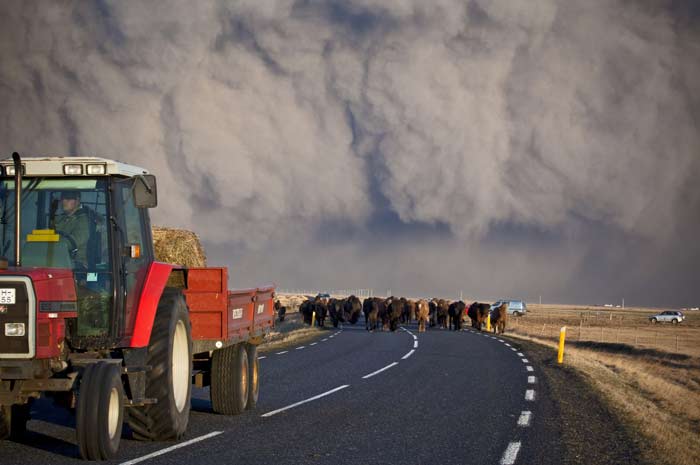 Authorities are concerned that if an airplane moves through the ash cloud, which contains high levels of silica, a glasslike dust, the engines could seize or stall.(NYT photo)
Authorities are concerned that if an airplane moves through the ash cloud, which contains high levels of silica, a glasslike dust, the engines could seize or stall.(NYT photo) -
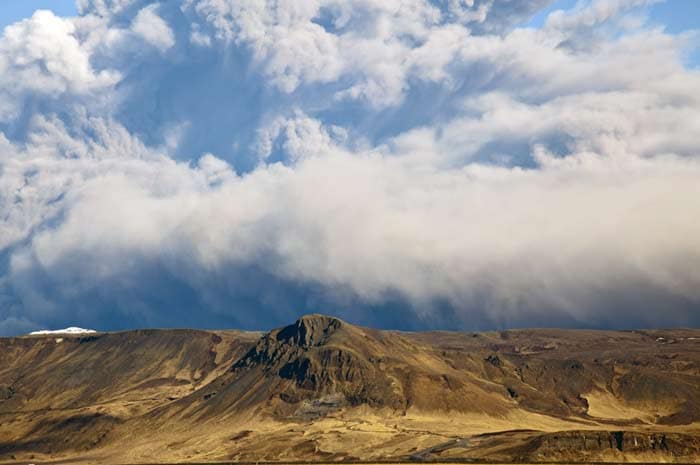 But several airlines, including Lufthansa of Germany and KLM of the Netherlands, completed successful test flights on Sunday, and said they saw no damage to their planes. The chief executive of British Airways, Willie Walsh, hopped aboard a Boeing 747 flying from London's Heathrow Airport to Cardiff, Wales, to gather data on the ash.(NYT photo)
But several airlines, including Lufthansa of Germany and KLM of the Netherlands, completed successful test flights on Sunday, and said they saw no damage to their planes. The chief executive of British Airways, Willie Walsh, hopped aboard a Boeing 747 flying from London's Heathrow Airport to Cardiff, Wales, to gather data on the ash.(NYT photo) -
 National aviation authorities continued to send conflicting messages to airlines and passengers on Sunday. While some isolated airports, like Frankfurt, Berlin and Warsaw, cleared the way for a handful of flights heading away from the ash cloud, most flights in northern and central Europe remained grounded.(NYT photo)
National aviation authorities continued to send conflicting messages to airlines and passengers on Sunday. While some isolated airports, like Frankfurt, Berlin and Warsaw, cleared the way for a handful of flights heading away from the ash cloud, most flights in northern and central Europe remained grounded.(NYT photo) -
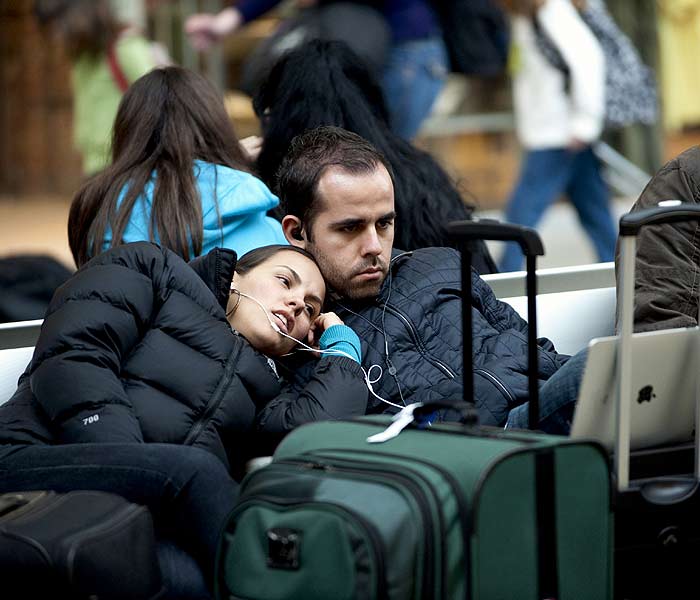 Since the ash cloud first appeared over European airspace, more than 63,000 flights have been canceled. Eurocontrol, the Brussels-based agency that coordinates air traffic management across the region, said that 20,000 flights, out of a regularly scheduled 24,000, were canceled.
Since the ash cloud first appeared over European airspace, more than 63,000 flights have been canceled. Eurocontrol, the Brussels-based agency that coordinates air traffic management across the region, said that 20,000 flights, out of a regularly scheduled 24,000, were canceled. -
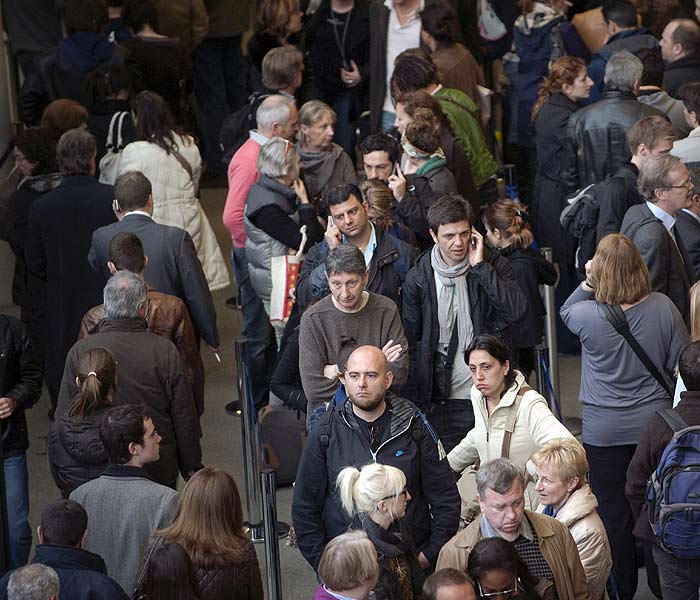 As the ash cloud from the volcano has spread, it has shut down airports from the British Isles to Ukraine, disrupting the travel plans of nearly 7 million travelers, according to one industry estimate. Delta Air Lines, Cathay Pacific of Hong Kong, Qantas of Australia and China Airlines of Taiwan were among those that canceled Europe-bound flights.(NYT photo)
As the ash cloud from the volcano has spread, it has shut down airports from the British Isles to Ukraine, disrupting the travel plans of nearly 7 million travelers, according to one industry estimate. Delta Air Lines, Cathay Pacific of Hong Kong, Qantas of Australia and China Airlines of Taiwan were among those that canceled Europe-bound flights.(NYT photo) -
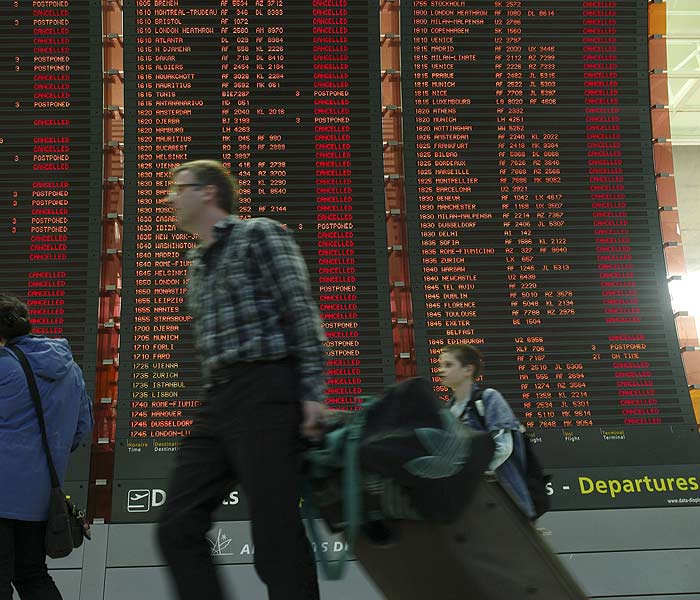 The interruption in service, particularly across the Atlantic, comes as the industry had just started to recover from the global recession, with business and international travel picking up. (NYT photo)
The interruption in service, particularly across the Atlantic, comes as the industry had just started to recover from the global recession, with business and international travel picking up. (NYT photo) -
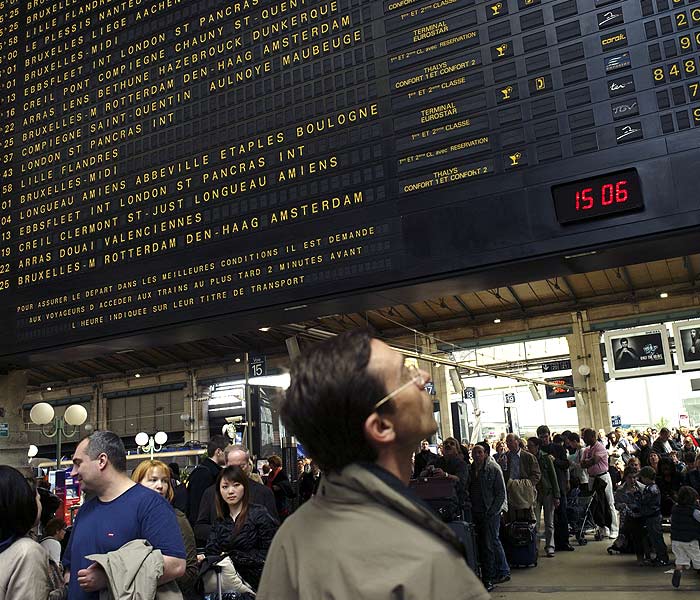 The interruption in service, particularly across the Atlantic, comes as the industry had just started to recover from the global recession, with business and international travel picking up. (NYT photo)
The interruption in service, particularly across the Atlantic, comes as the industry had just started to recover from the global recession, with business and international travel picking up. (NYT photo) -
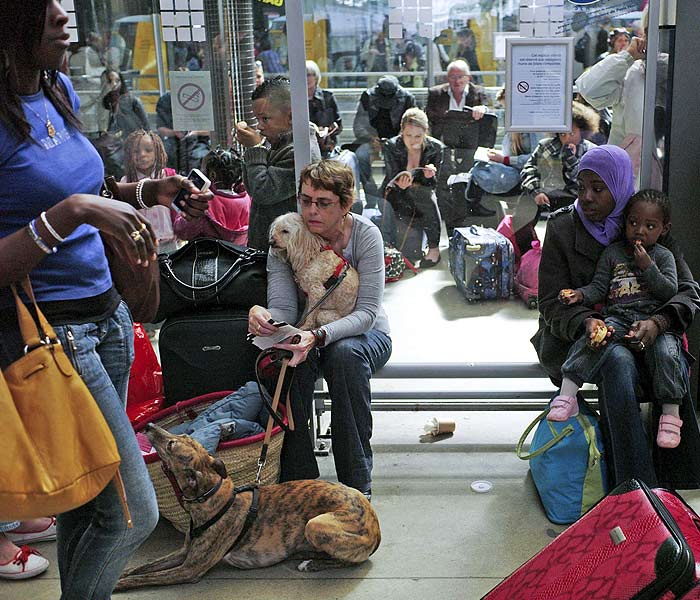 After the spike in oil prices in 2008, several airlines went bankrupt, including Eos, an all-business-class carrier that offered flights between Kennedy International Airport in New York and Stansted Airport in London. Analysts said Europe's legacy flag carriers, including British Airways, Lufthansa and the Air France-KLM combination, would feel the most pain from the shutdown because they have high fixed costs.(NYT photo)
After the spike in oil prices in 2008, several airlines went bankrupt, including Eos, an all-business-class carrier that offered flights between Kennedy International Airport in New York and Stansted Airport in London. Analysts said Europe's legacy flag carriers, including British Airways, Lufthansa and the Air France-KLM combination, would feel the most pain from the shutdown because they have high fixed costs.(NYT photo) -
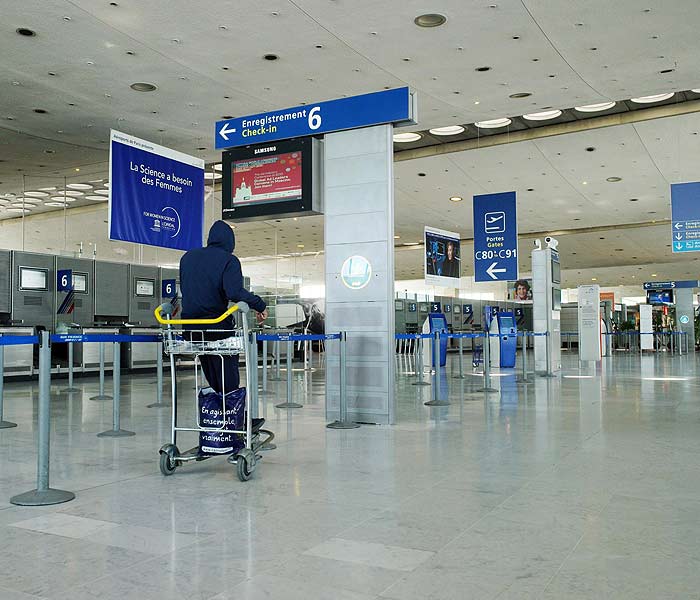 European airlines were already suffering from the slow pace of economic recovery there. Even before the latest crisis, the International Air Transport Association had projected that the industry would lose $2.8 billion this year, down from last year's loss of $9.4 billion.
European airlines were already suffering from the slow pace of economic recovery there. Even before the latest crisis, the International Air Transport Association had projected that the industry would lose $2.8 billion this year, down from last year's loss of $9.4 billion.
"These disruptions could not have come at a more difficult time as airlines in Europe and elsewhere struggle," said Steve Lott, a spokesman for the industry group. "The big wildcard is, how long does this last and how long before we can get flights back in the air?" (NYT photo) -
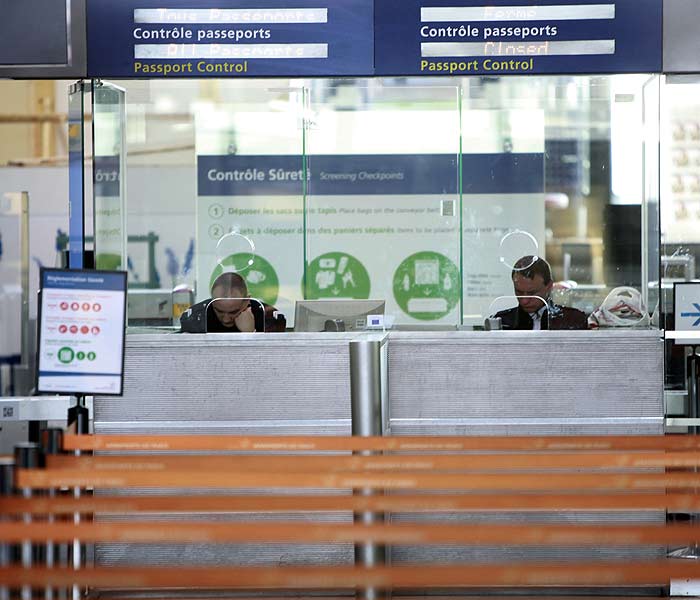 In a conference call with Eurocontrol, one airline representative sharply chastised national civil aviation authorities for being inconsistent in applying flight restrictions and stressed that the flight bans were creating "a serious economic issue for us." (NYT photo)
In a conference call with Eurocontrol, one airline representative sharply chastised national civil aviation authorities for being inconsistent in applying flight restrictions and stressed that the flight bans were creating "a serious economic issue for us." (NYT photo) -
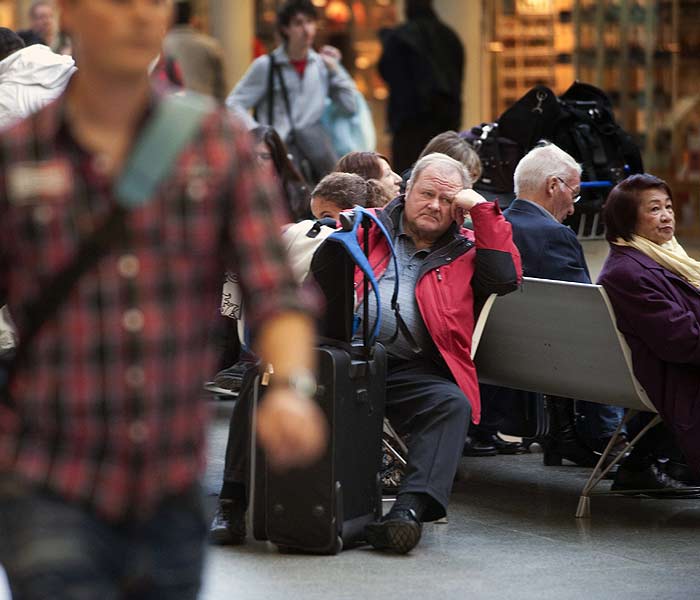 The events in Europe have also had an economic effect on American carriers. The four-day closing of European airports so far has meant lost revenue of $80 million for U.S. carriers that fly the lucrative trans-Atlantic route, said Michael Boyd, an aviation consultant. It also meant a loss of connecting passengers, who often fly from Europe to the United States, and then on to another domestic destination. (NYT photo)
The events in Europe have also had an economic effect on American carriers. The four-day closing of European airports so far has meant lost revenue of $80 million for U.S. carriers that fly the lucrative trans-Atlantic route, said Michael Boyd, an aviation consultant. It also meant a loss of connecting passengers, who often fly from Europe to the United States, and then on to another domestic destination. (NYT photo) -
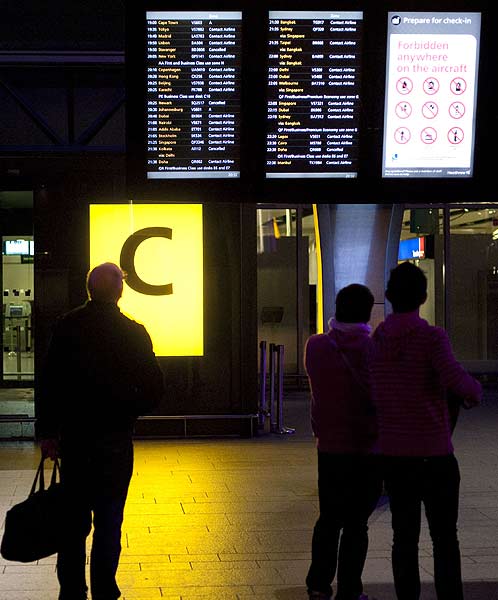 While much of Europe's airspace remained closed, the airport in Reykjavik, Iceland's capital, was still open for business since southern winds were pushing ash away from the small rocky island in the North Atlantic.
While much of Europe's airspace remained closed, the airport in Reykjavik, Iceland's capital, was still open for business since southern winds were pushing ash away from the small rocky island in the North Atlantic.
The shutdown of Heathrow airport, the world's busiest, also allowed authorities for the first time to inspect runways on foot in broad daylight instead of in the middle of the night. (NYT photo)
Advertisement
Advertisement
Advertisement
Advertisement
